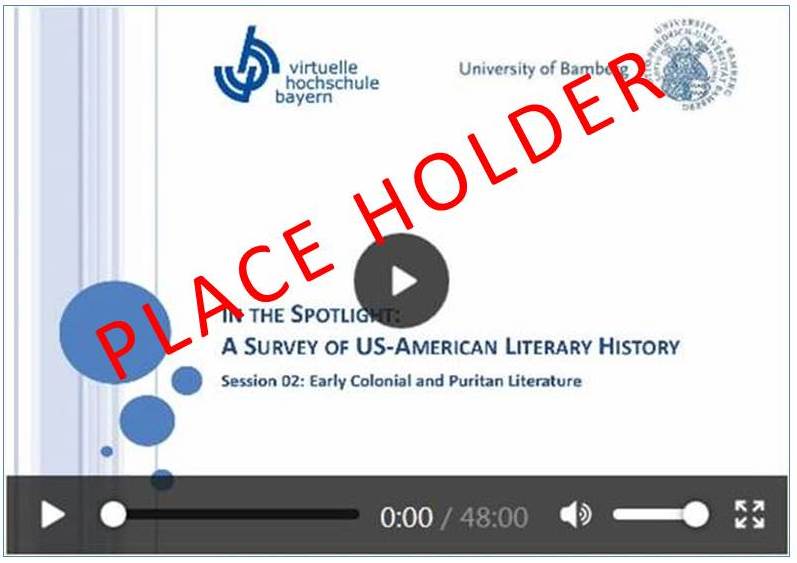##DEMO-Kurs "In the Spotlight: A Survey of US-American Literary History"
Section outline
-
Attention: this in the demo version of the online course "In the Spotlight: A Survey of US-American Literary History"!
This means that visitors can see the first few sessions for informational purposes only. Consequently, access to some of the material is restricted. Full access to all sessions and materials is only possible after registration for the online seminar via the vhb.
-
This forum will be used by the instructor to post messages for all participants of this class.
-
Use this forum to post course-related questions. This is an open forum, and you are encouraged to give answers and help each other. The instructor will also be there to answer your questions
-
Weekly Chat with the Instructor Còmhradh
-
-

Welcome! My name is Dr. Nicole K. Konopka and I am delighted to be your instructor for this class. I am passionate about distance learning and look forward to working with you this semester. This course focuses on the literary history of the United States of America and we will read and discuss fiction, poems, and plays that illustrate the development of US-American literature from its Puritan beginnings in the 17th century until the 1990s.
Directly below you will find a general introduction that summarizes organizational information and introduces you to the structure of the class. Further down you find a number of PDF-files that provide you with even more information: the detailed syllabus (contains deadlines!), the reading list, a list of reference texts, and netiquette guidelines. At the bottom you will find a folder that contains master copies for your own contributions to this class and instructions on how to label the files you hand in.
At the very top of the website, you will find a QUESTION FORUM to post course-related questions to everyone who is enrolled in this course. In addition, I am always pleased to receive personal emails with updates, questions, or concerns. Don’t hesitate to use email to notify me of any problems that you are having. I should be able to reply within two work days.
Have a wonderful semester!
~Nicole Konopka
-
In this session you will learn about:
- Your fellow classmates
- Tools to analyze and interpret texts
- Reading strategies
Required reading:
- Charlotte Perkins Gilman, "The Yellow Wallpaper" (1892)
Activities:
- Forum
- Guiding Questions
- Multiple Choice Quiz
- Worksheet
-
In this session you will learn about:
- The beginnings of American literature
- The Puritans and their literature
- Plain style poetry and the captivity tale
Required reading:
- Anne Bradstreet, “To My Dear and Loving Husband” (1678)
- Mary Rowlandson, excerpts from The Sovereignty and the Goodness of GOD, Together With the Faithfulness of His Promises Displayed; Being a Narrative of the Captivity and Restauration of Mrs. Mary Rowlandson… (1682)
Activities:
- Reading Questions
- Discussion Forum
- Worksheet
- Multiple Choice Quiz


